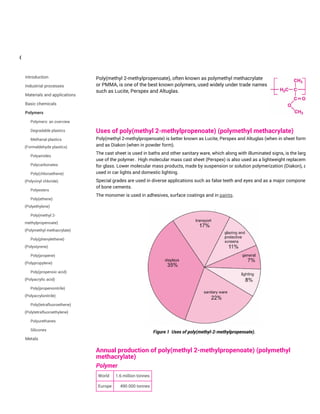Poly(methyl 2-methylpropenoate), also known as polymethyl methacrylate (PMMA), is a clear plastic that is used in various applications like sanitary ware, signs, replacement glass, and car lights. It is produced from methyl methacrylate monomer, which is mainly made from propanone and hydrogen cyanide or from ethene, carbon monoxide, and methanol. The polymer is made through free radical polymerization of the monomer, which can be done in bulk, solution, suspension or emulsion. Co-polymers are also used for properties like increased thermal stability.




